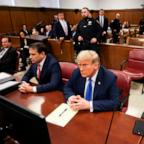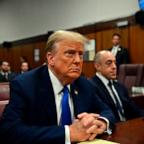Airport security arsenal adds behavior detection
DULLES, Va. -- Doug Kinsey stands near the security line at Dulles International Airport, watching the passing crowd in silence. Suddenly, his eyes lock on a passenger in jeans and a baseball cap.
The man in his 20s looks around the terminal as though he's searching for something. He chews his fingernails and holds his boarding pass against his mouth, seemingly worried.
Kinsey, a Transportation Security Administration screener, huddles with his supervisor, Waverly Cousins, and the two agree: The man could be a problem. Kinsey moves in to talk to him.
The episode this month is one of dozens of encounters airline passengers are having each day — often unwittingly — with a fast-growing but controversial security technique called behavior detection. The practice, pioneered by Israeli airport security, involves picking apparently suspicious people out of crowds and asking them questions about travel plans or work. All the while, their faces, body language and speech are being studied.
The TSA has trained nearly 2,000 employees to use the tactic, which is raising alarms among civil libertarians and minorities who fear illegal arrests and ethnic profiling. It's also worrying researchers, including some in the Homeland Security Department, who say it's unproven and potentially ineffectual.
"Terrorists or anybody who knows about screening will find this very easy to beat if you give them a little training," says Michigan State University professor Timothy Levine, who's published more than a dozen papers on deception and communication.
Advocates say behavior detection strengthens security by replacing "hunches" about who seems troublesome and worthy of scrutiny with research that shows how suspicious people actually look, sound and act.
Its growing use portends a transformation in airport security, and perhaps beyond. The technique could be used in anything from interrogations to job interviews. U.S. troops, FBI agents, Customs officers, consular officials, personnel managers and thousands of police at dozens of agencies have been trained to observe whether suspects, informants or applicants are being truthful. Bus drivers, airline ticket agents and airport custodians, sales clerks and waiters are getting milder instruction in spotting odd behavior.
At the vanguard is the TSA, which plans to train 600 more screeners in the next year and have "behavior-detection officers" in every major airport to spot possible terrorists.
"We have to get out front and take the fight to them and let them know that when they show up at an airport, they're susceptible to being identified," TSA chief Kip Hawley says.
The future could be a "Blade Runner" world of cameras and body scanners that monitor voice, movement, speech, gait, pulse, perspiration and body odor to spot suspicious people. Federal agencies are pouring millions of dollars into automated sensors that could read vital signs and help flag suspicious people. One leading San Francisco researcher, Paul Ekman, says he's gotten Defense Department funding to finish his work building an interactive training game that teaches people to be alert for facial expressions that often precede a physical assault.




